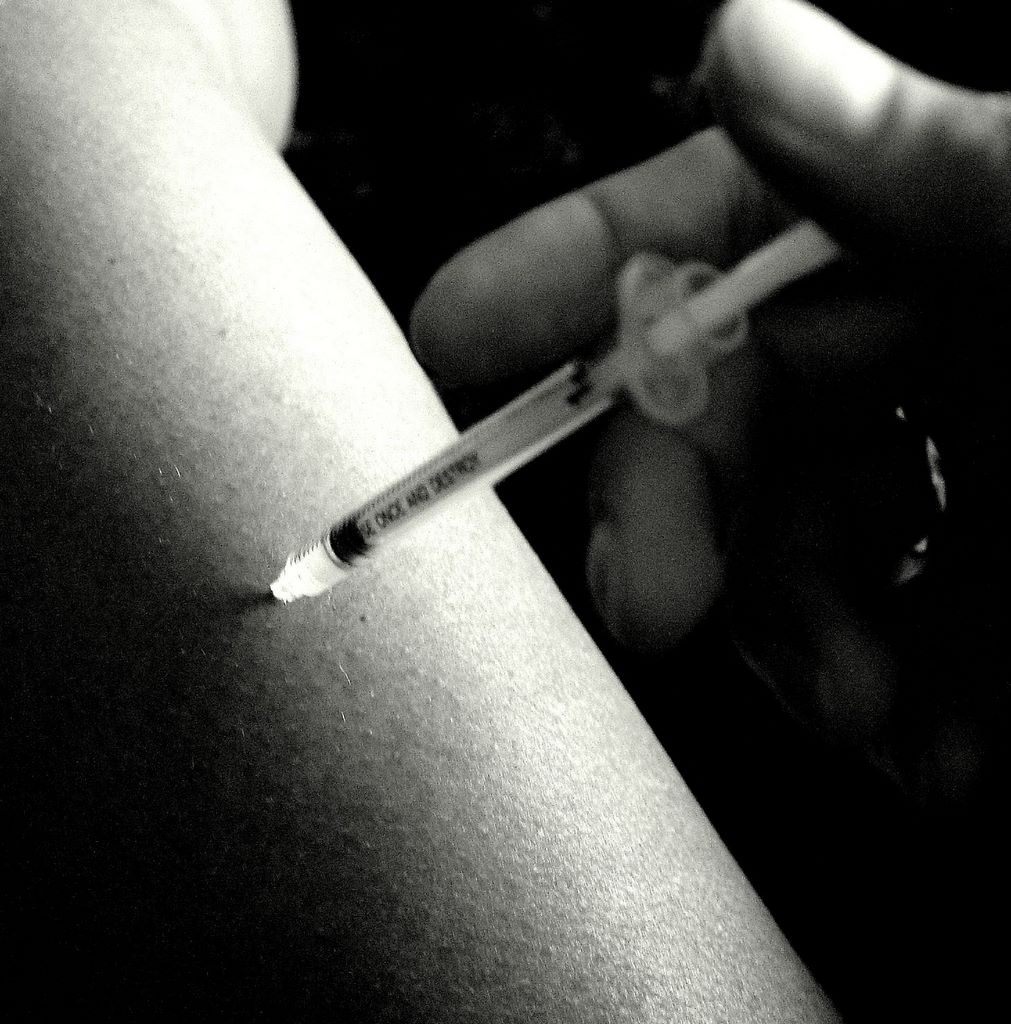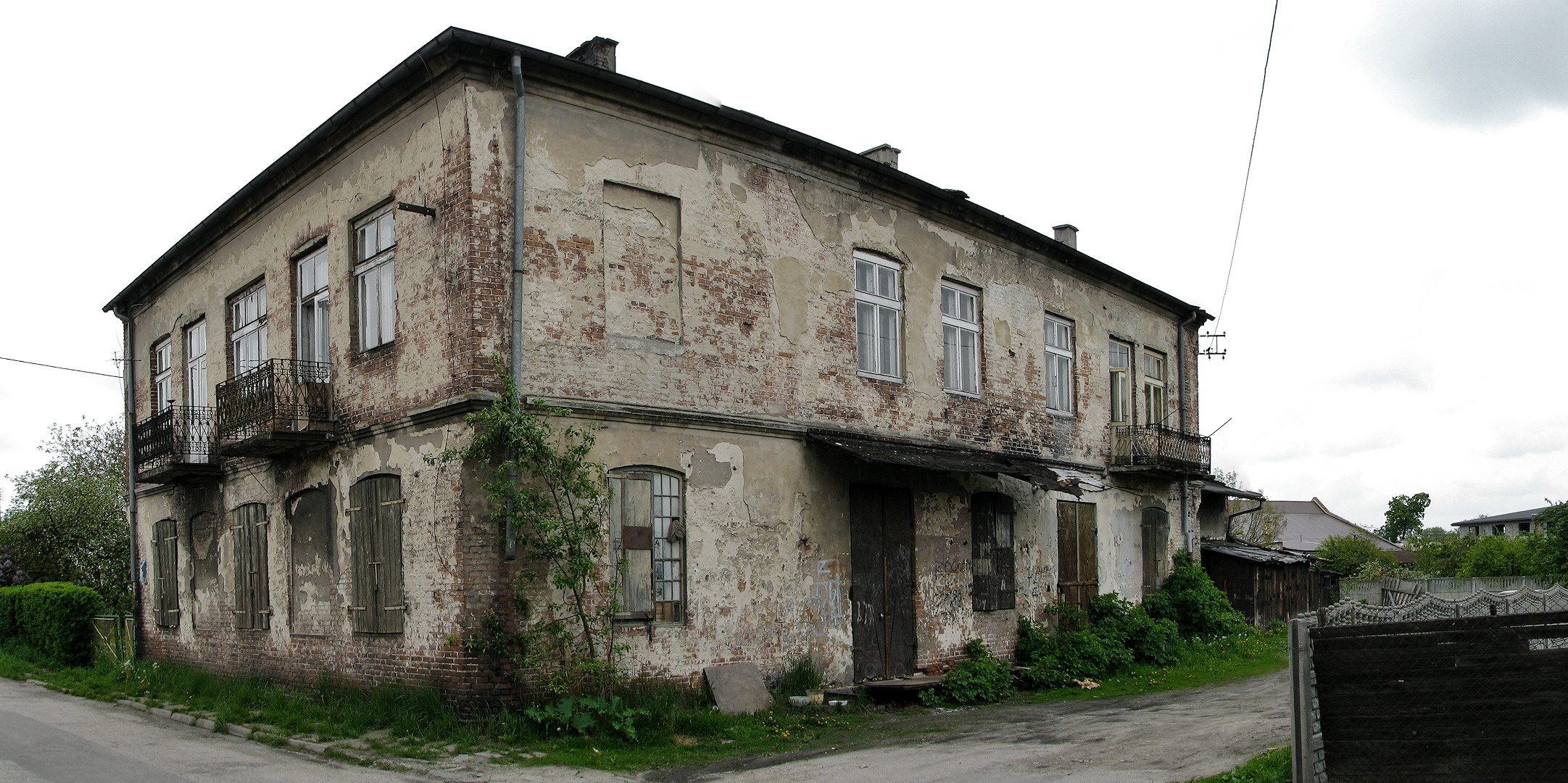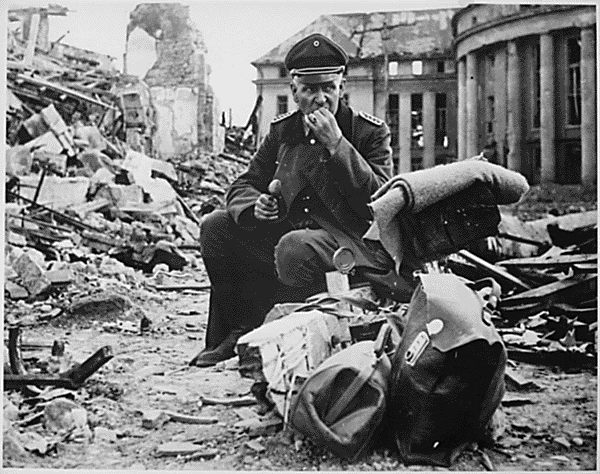How a Fake Typhus Epidemic Saved a Polish City From the Nazis

A glimpse of WWII Poland. (Photo: Wikimedia Commons)
During World War II, a man went to the doctor in Rozwadów, Poland with a unique complaint. He was one of thousands of Poles forced by the Nazi occupiers to work in German labor camps. The man had been granted a 14-day leave to visit his family, and his time was almost up.
He was desperate to escape the camp, but knew that if he did not return, he would be hunted down and he and his family would be arrested and sent to a concentration camp–a death sentence in many cases. He had considered suicide, but also knew that a serious disease, verified by a physician, would spare him from returning to the camp.
The two doctors who saw the man decided to help him in his quest for a diagnosis, and offered to give him an injection. He accepted. The doctors then drew a blood sample and sent it to a German lab. Soon, they received a telegram that read: “Weil-Felix positive.” Their patient had tested positive for typhus. The telegram was given to the local German authorities as proof that the patient had an infectious disease, and the man was subsequently released from his duties at the camp. He was also excluded from future detention, as were any family members he had come in contact with.
The doctors did not actually make their patient sick, of course. That would be unthinkable to them, even in the most dire circumstances. The typhus epidemic that they brought to Rozwadów was instead their own unique spin on “faking sick,” a concocted outbreak meant to shield their patients and neighbors from persecution. The doctors had saved the man’s life by giving him a simulacrum of the disease, and by giving the same shot to many others in the area, they would save thousands more.
 Doctors injected Polish men with a fake disease that tricked German officers into believe they were infected with typhus. (Photo: BlueGoaॐ☮/flickr)
Doctors injected Polish men with a fake disease that tricked German officers into believe they were infected with typhus. (Photo: BlueGoaॐ☮/flickr)
One of the doctors, Eugene Lazowski, was already an old hand at defying the Nazis when the ruse began. During the German occupation of Poland, around one-fifth of the country’s population was killed in mass executions and concentration camps. Polish physicians, Lazowski said, were “confronted with a special task–not only to prevent diseases and treat sick people, but also to defend their lives and those of their countrymen.”
Lazowski began waging what he called a “private war” against the occupiers. After escaping a German POW camp by scaling the wall and riding off on an unattended horse cart, he went back to his home in Rozwadów and worked for the Polish Red Cross. His house backed up against the fence that separated the Jewish ghetto from the rest of the city. Conditions in the ghetto allowed diseases to run rampant, but the doctor was forbidden from treating any Jews, so he arranged a covert way of helping them. When someone in the ghetto was ill, they would tie a rag to the fence, and Lazowski would sneak in at night to bring medical supplies and treat the sick. To keep the Nazis from catching on, he fudged his records and exaggerated the amount of supplies and medicine that he used on his non-Jewish patients.
Lazowski’s friend Stanislaw Matulewicz also practiced medicine in Rozwadów, and a chance discovery allowed the pair to protect even more people by playing on the Nazis fears of contamination. After typhus wreaked havoc in the trenches during World War I, the Nazis were terrified of possible outbreaks among their soldiers. German authorities in Poland required doctors to report all suspected and confirmed cases of typhus to them and send blood samples to German-controlled labs for testing. Poles with the disease were quarantined and spared detention in the labor camps, but infected Jews were executed.
“When many cases were reported from an area, it was declared by the German Public Health Authority to be an ‘epidemic area,’” the two doctors wrote after the war. “This situation produced some advantages for the people, because the Germans were inclined to avoid such territories and the population was relatively free from atrocities.”

A glimpse into Rozwadów, Poland today. (Photo: Krzysztof Dobrzański/Wikimedia Commons)
The most common test for typhus at the time was the Weil-Felix test, based on 1916 research showing that antibodies produced by the immune system in response to a typhus infection also react to Proteus OX-19, a strain of bacteria known for causing urinary tract infections. For the Weil-Felix test, dead Proteus OX-19 bacteria is mixed with a blood sample from a patient. If the mixture becomes cloudy, it’s clear sign of typhus.
While learning to administer the test on his own so he could bypass the German labs and keep any typhus infections among his Jewish patients secret, Matulewicz figured out that a person injected with the same dead bacteria would produce the same antibodies, yielding a false-positive test result for typhus. “It immediately became clear that the artificial Weil-Felix could be used as a form of defense against the policies of the German occupation government,” Lazowski later explained.
He suggested that they use doctored tests and false-positive results to create a typhus “epidemic” in and around Rozwadów to keep the Germans away. Starting with the laborer on leave, they began giving any non-Jewish patients with symptoms resembling the early stages of typhus, such as fever, cough, rash, and aches, injections of dead Proteus OX-19 under the guise of “protein stimulation therapy.”
The doctors worked in secret and didn’t even tell their patients what they were doing, and only revealed their scheme to the world in 1977 in an article for the American Society for Microbiology’s newsletter. They were also careful to mimic the ebb and flow of real epidemics, giving more injections and creating more “typhus” cases in the winter and fall. To throw the authorities off, they referred some of their injected patients to other doctors, who would diagnose and report the typhus infections on their own.
“More and more positive Weil-Felix reactions were reported by German-controlled laboratories to German authorities and confirmed by our reports,” the doctors wrote. “Soon the number of reported cases was sufficiently large to declare the area of our practice (about a dozen villages) an ‘epidemic area,’ with relative freedom from oppression.”

A World War II Nazi officer takes a break for lunch. (Photo: Marion Doss/flickr)
The doctors’ lies were almost revealed by the lack of deaths. With a typhus epidemic supposedly raging in the Rozwadów area, the Nazis began to wonder why more people weren’t dying there, and an informant suggested that the outbreak was not what it appeared to be. A team of German doctors was sent to the town to investigate.
Lazowski greeted the visitors with a spread of Polish foods and vodkas. While the senior German doctors sat down to the feast, their underlings toured the town with the doctor. Before their visit, Lazowski had gathered his most unhealthy-looking patients, all of whom had been injected with Proteus bacteria, together in a dirty room. Scared of infection, the young doctors gave the building and patients that Lazowski showed them only a cursory glance. After doing a few blood tests to confirm the epidemic, they quickly left. Their supervisors presumably enjoyed the vodka enough not to double-check.
The quarantined area that Lazowski and Matulewicz created became a haven for Polish Jews, who could hide in Rozwadów under the cover of the fake epidemic without fear of the Nazis discovering them. All told, the doctors saved an estimated 8,000 people from being killed or imprisoned during their three-year campaign with the help of a UTI-causing bacterium, proving that sometimes the syringe is mightier than the sword.






















Follow us on Twitter to get the latest on the world's hidden wonders.
Like us on Facebook to get the latest on the world's hidden wonders.
Follow us on Twitter Like us on Facebook